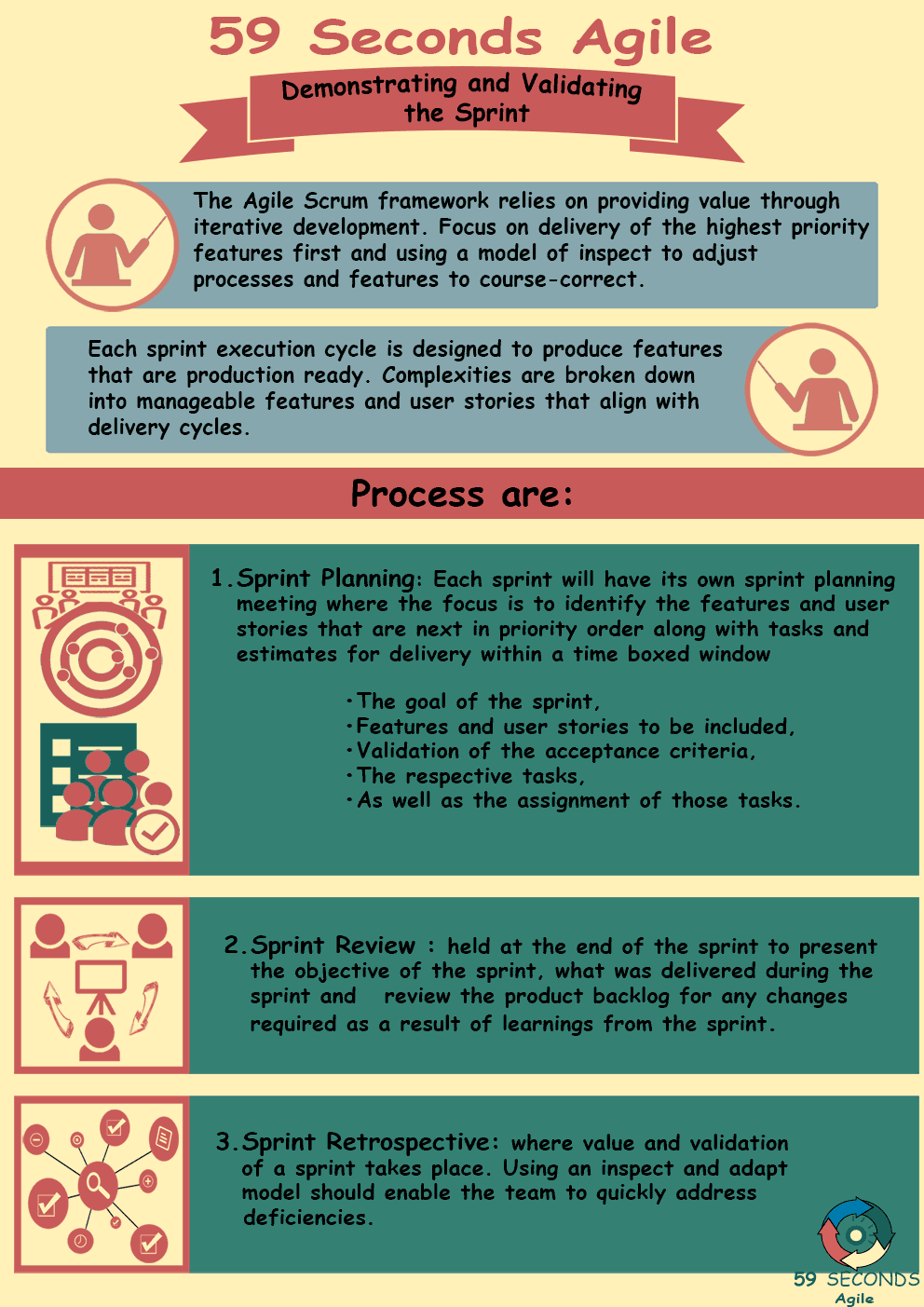Demonstrating and Validating the Sprint
A 59 Seconds Agile Training Video
Continue to Part 6 Below
Demonstrating and Validating the Sprint
A 59 Seconds Agile Article
This article provides an ‘Introduction to Successful Delivery with Scrum’ and looks to discuss the process for Demonstrating and Validating the Sprint
Successful Delivery with Scrum
The next aspect of working with people on a development project is the importance of self-organizing teams. One major difference between agile project development and more traditional development systems is how the teams are organized.
In traditional systems, your team will have someone in charge of them who tells them what to do each day and dictates how the team will move through the process. While this may seem like it would help the team move more quickly through the development process, there are many benefits to not having one single person in charge of the whole project. Every member of the team can be actively seeking ways to work towards finishing the feature they’re working on at all times. Everyone has the responsibility and empowerment to make decisions.
They can work through problems and obstacles quickly as a team, rather than having to wait for the decision of a manager. Allowing your team to self-organize ensures that they can work in the way that makes the most sense for them. Setting the expectation early that the team is responsible for themselves and their day to day operations gives your team the freedom they need to create the most value possible.
Remember, proper preparation leads to the successful delivery of products.
Continue Reading —> Next
Demonstrating and Validating the Sprint
A 59 Seconds Agile Video Animation
Continue Reading —> Next
User Stories Applied
A 59 Seconds Agile Book Review
User Stories Applied by Mike Cohn is one of our favourite books on Agile User Stories. The book starts with an overview into user stories, and details what a user story is and the different aspects of them. He then discusses how to go about writing a user story, and provides details of the INVEST criteria that can be used to determine if the story is meeting all of its objectives. Next Mike gives an in depth discussion of who user stories are written for and where to begin when gathering the details for them. The book then discusses acceptance testing user stories, including how to go about specifying these criteria and the responsibilities of the development team and customers during this process.
Continue Reading —> Next
Demonstrating and Validating the Sprint
A 59 Seconds Agile Infographic

Continue Reading —> Next
Agile Scrum Master Training Course
Our Favourite Agile Books
We found these books great for finding out more information on Agile Scrum:
Continue Reading —> Next


